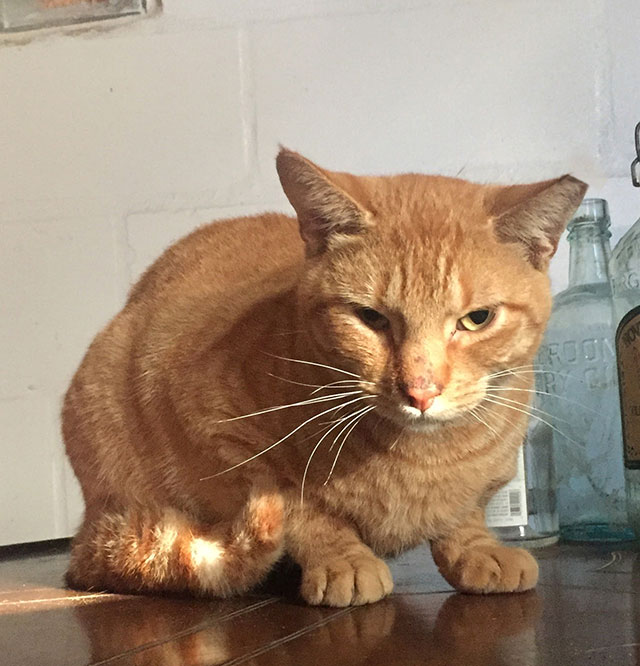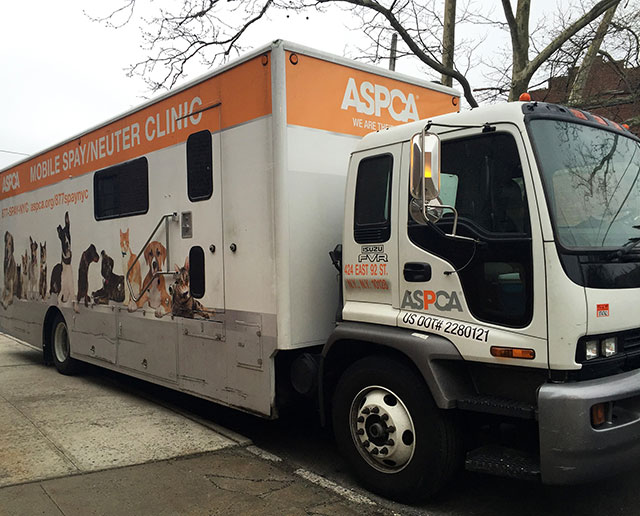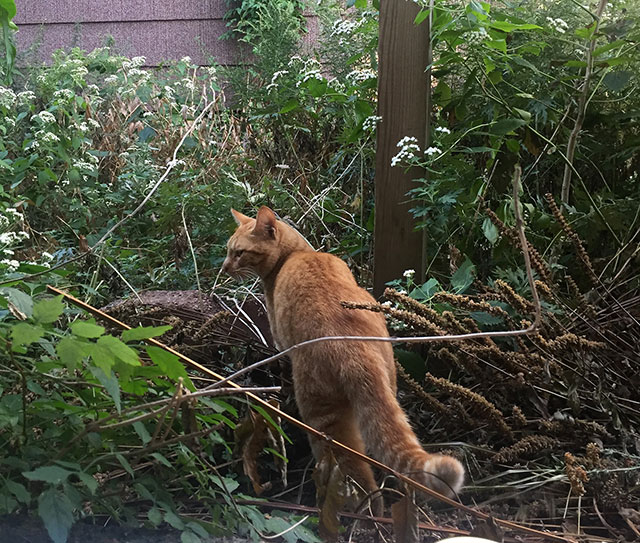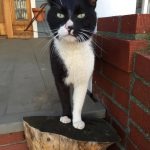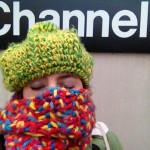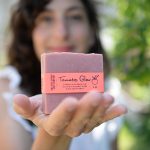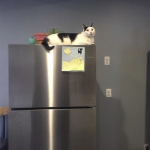Got’em!
Living in Rockaway means sharing our space with our feline friends. I didn’t make a conscious decision to get involved with cat rescue and fostering, It happened out of necessity. It all started with a tuxedo cat named Obama. Rumor on the block has it that people moved out across the street about 4 years ago and left him behind. He made himself at home when our house was under renovation. We were residing, so there were plenty of openings for him to get inside.
He’s a good cat and excellent mouser, but at the time had a deep and abiding love of spraying (urine marking) everywhere. I learned at the Trap Neuter Release (TNR) classes held at the Queens Library at Arverne that male cats will spray less frequently if they are neutered. So it was his time to be “TNR-d”.
This first trapping mission was crazy stressful. After catching a few very angry community cats that had already been fixed, and a raccoon (scary as hell!), I finally got the cunning Obama! Trapping needs to be done before midnight, the night before your appointment. This is so the cat(s) don’t eat 8 hours before surgery. You trap in the dark, then hold the cat(s) overnight. They need to be at the ASPCA by 7am the next day. It helps to have another person on trapping missions! Eventually, we trapped him and transported him to the veterinary clinic run by the ASPCA. (In addition to being neutered or spayed, cats may also receive vaccinations, flea/tick treatment and get a general health check.)
Over time, the hardest part for me about TNR became the “R” part – releasing. That’s how I ending up adopting Lil’ Lefty. It was winter and he was only a few months old. Vulnerable and adorable, I couldn’t return him to the cold streets.
I bring all this up because I just lent a hand in another successful mission. Last winter, here and there I would spot a young tom. He was quite elusive. Come spring he reappeared stronger and less recluse, he was a survivor. We named him Lefty Junior, or LJ for short, because he looks a lot like our Lefty, also an orange tabby.
This summer my neighbor Eric and I started plotting. LJ lets Eric pet him, so he offered to trap and bring him the the ASPCA but he didn’t have a holding room for after-surgery recovery, during which you keep an eye on the trapped cat, making sure he’s eating and using the bathroom normally. So I told him “If you can git ‘im, I’ll hold im!”
This past week the ASPCA spay/neuter truck was in Arverne. I got the call! Eric had successful trapped LJ. The wheels were in motion. The next day I was expecting LJ around 5pm. I had the room in the basement all ready for him. When my neighbor dropped him off this cat was pretty pissed! Overnight, he calmed and slept mostly. The next morning I came in to check on him. He started growling! It felt like a long to 48 hours for me and to him as well, I would imagine. He was eating, using the bathroom, didn’t show swelling or abnormal walking – LJ was ready to be freed!
He darted out, then stopped and looked back for a split second. Maybe a thank you?
Okay, now bring me my soapbox!: The goal of TNR is to reduce the feral cat population, feeding cats that are not fixed is doing the opposite. Each cat that is neutered/spayed by the ASPCA, and has their left ear cut, it’s called an ear tip. This is how you can tell if the cat you want to care for has been fixed already and received a rabies vaccine. Once you know your cat(s) have been neutered/spayed you can feed and start sheltering them worry-free. I can’t’ stress enough the importance of first making sure the cats you are feeding are neutered or spayed.
If you’re interested in helping the ferals and stray cats in our neighborhood the first step is to take a TNR (Trap Neuter Release) class. I took mine with Animal Alliance NYC (animalalliance nyc.org). After taking the class you receive certification and benefits from the ASPCA — discounted fees for neuter/spay; you can apply for free cat food; you can sign up for free transport on trapping days; and you can meet a network of cat lovers to help as you begin trapping and caring for ferals.
